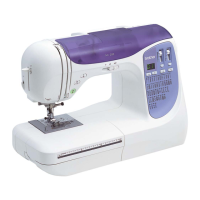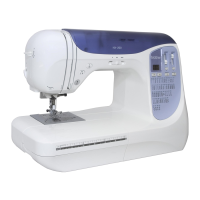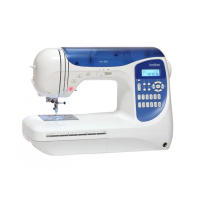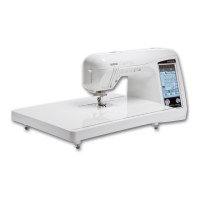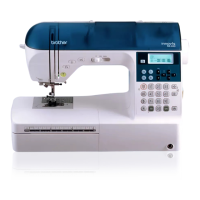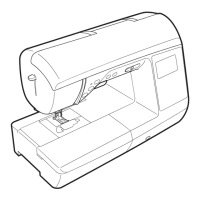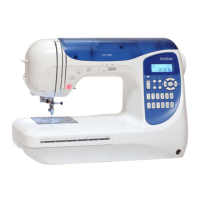
Do you have a question about the Brother NX600 and is the answer not in the manual?
| Maximum Stitch Width | 7 mm |
|---|---|
| Maximum Stitch Length | 5 mm |
| LCD Display | Yes |
| Automatic Needle Threading | Yes |
| Drop Feed | Yes |
| Speed Control | Yes |
| Built-in Memory | No |
| USB Port | No |
Describes the main mechanical components of the sewing machine.
Explains the mechanism for transmitting power and motion within the machine.
Identifies the locations of various electronic parts.
Illustrates the flow of control signals within the machine's electronics.
Details how the main motor's speed and operation are managed.
Explains the mechanisms for pattern creation and thread cutting.
Describes the function of various electronic parts.
Provides instructions and precautions for using the automatic threader.
Details the removal procedures for the primary components of the sewing machine.
Covers the disassembly of electrical components and motors.
Explains how to disassemble the thread tension system.
Provides steps for disassembling the bobbin winding system.
Shows the layout of these key mechanisms.
Details the disassembly of the needle, presser, and upper shaft parts.
Specific instructions for disassembling the needle-presser assembly.
Covers the disassembly of the feed and bobbin mechanisms.
Provides steps for disassembling the thread cutting mechanism.
Instructions for reassembling these components.
Steps for reassembling these mechanisms.
Guidance on reassembling the bobbin winding system.
Procedures for reassembling the thread tension system.
Covers reassembling electrical components and motors.
Specific instructions for reassembling the needle-presser assembly.
Guidance on reassembling the feed mechanism.
Procedures for reassembling the thread cutting mechanism.
Covers visual checks and basic inspections of machine parts.
Explains how to enter and use the machine's test modes for diagnostics.
Details adjustments for the main mechanical units of the machine.
Covers adjustments specific to various machine modules.
Troubleshooting steps when the machine shows no power.
Diagnosing issues with pulse motor positioning.
Steps to resolve problems with the main motor not operating.
Troubleshooting for issues with pattern formation.
Diagnosing and fixing thread tension problems.
Steps for resolving LCD display issues.
Addresses common sewing quality issues related to thread and needle.
Troubleshooting for the work area lamp failure.
Diagnosing main motor issues when other functions seem normal.
Troubleshooting for inconsistent motor speed.
Addresses issues preventing thread from being properly guided.
Explains causes and solutions for needles breaking during sewing.
Diagnosing and fixing intermittent stopping issues.
